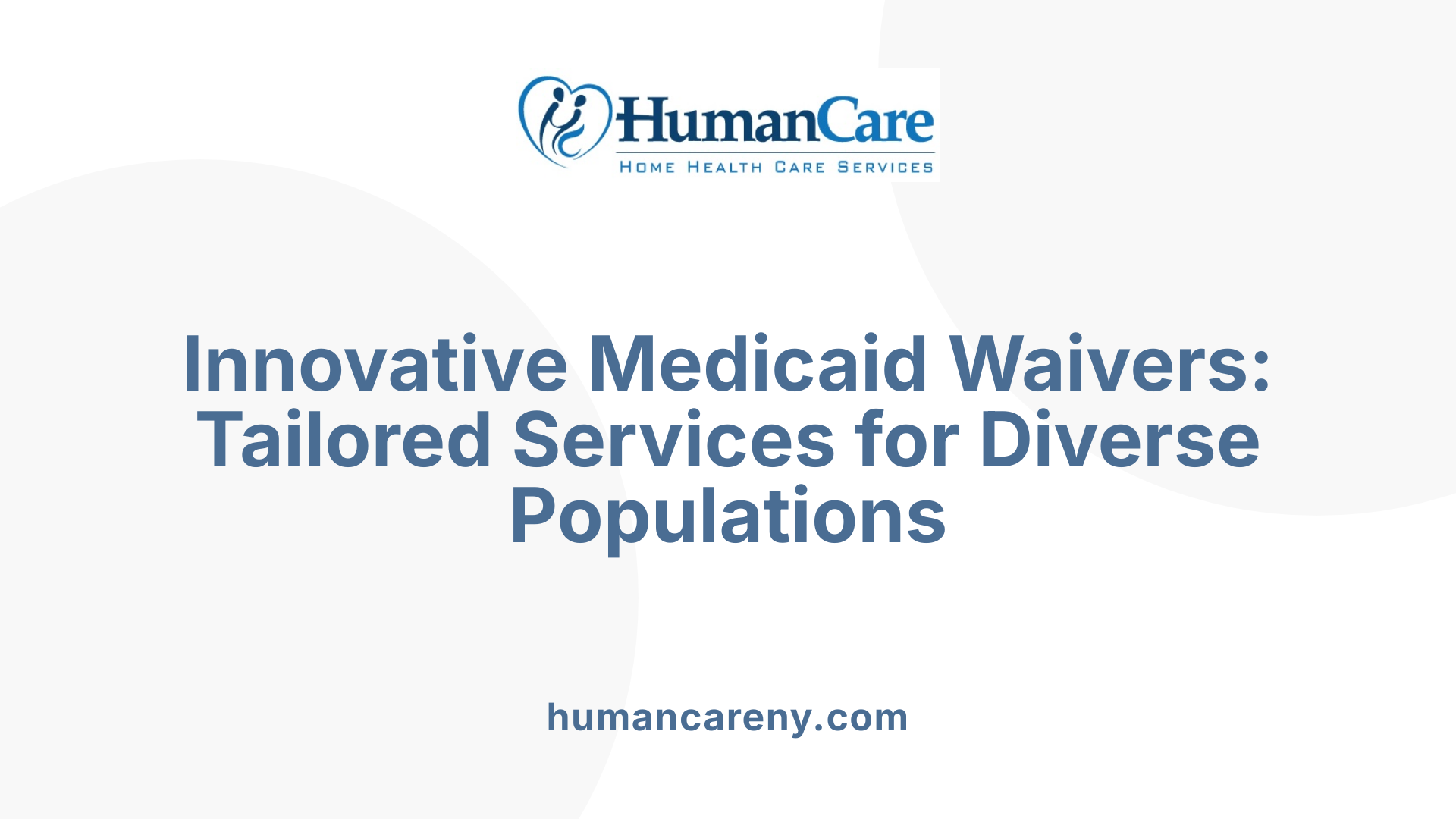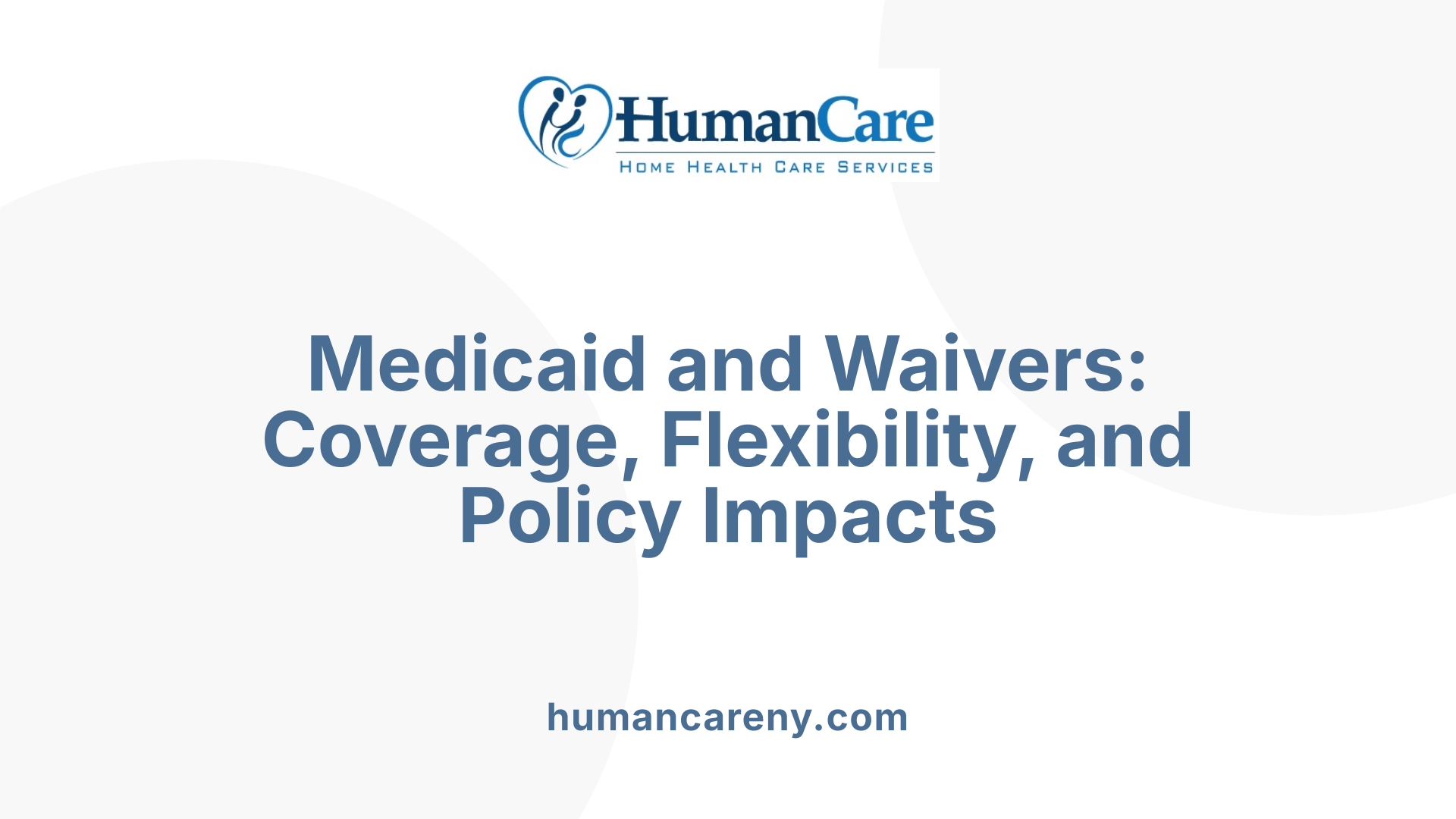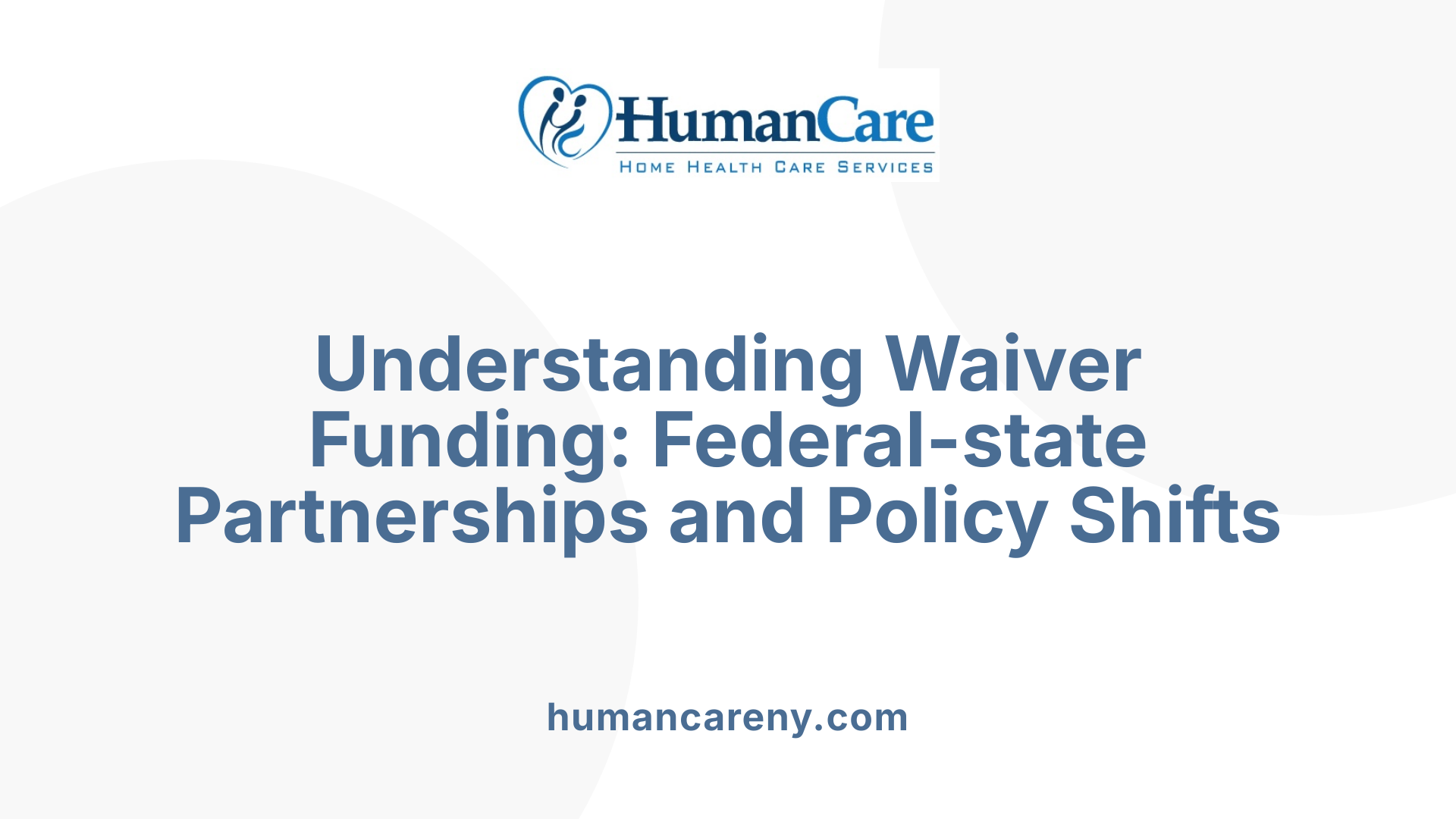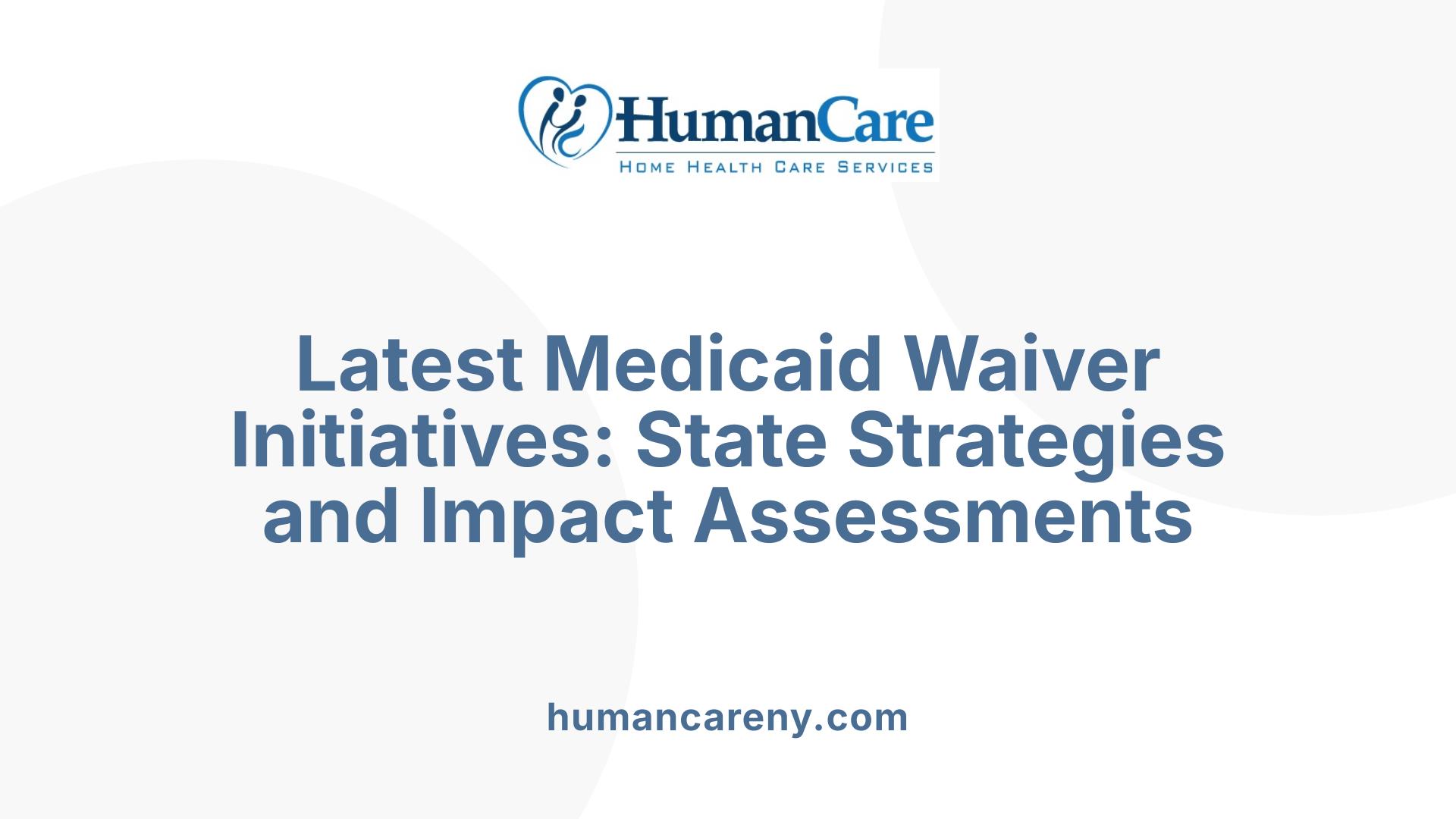Setting the stage for Medicaid waiver program updates
Medicaid waiver programs serve as critical tools for states seeking to innovate and tailor their Medicaid services beyond federal standards. With nearly all states operating at least one Section 1115 waiver, these programs enable a broad spectrum of policy experimentation, from extending coverage to social determinants of health (HRSN) to restructuring payment systems. Recent policy shifts under different administrations have notably expanded and constrained these waivers, reflecting nationwide priorities and political ideologies. This article explores the purpose and scope of Medicaid waivers, current policy updates, funding mechanisms, key state-level developments, and opportunities for stakeholders to engage in shaping the future of Medicaid reforms.
Understanding Medicaid waiver programs and their primary objectives

What are Medicaid waiver programs and their purposes?
Medicaid waiver programs are innovative tools that states use to expand and customize Medicaid services beyond federal standards. These programs allow states to test new approaches to delivering and financing healthcare, primarily aimed at improving access, quality, and cost-effectiveness. They are designed to offer flexibility in how services are provided, which helps address specific population needs.
Most waivers focus on providing community-based services to populations that would otherwise be in institutional settings, such as nursing homes or hospitals. For example, they make it possible for individuals with disabilities or chronic health conditions to receive care at home or in community settings rather than in more restrictive institutional environments.
The purpose of these waivers is to promote the Medicaid program’s core objectives: improving health outcomes, increasing access to care, supporting independence, and reducing costs. They also serve as testing grounds for innovative policies that can be expanded if proven effective.
Today, nearly all states operate at least one active Section 1115 Medicaid waiver, with some managing multiple waivers that experiment with various approaches. These include waivers focusing on eligibility, benefits, social determinants of health (like housing and nutrition), and delivery system reforms. The federal approval process ensures these innovations are aligned with Medicaid’s overall goals while maintaining budget neutrality.
Flexible approaches in Medicaid delivery
One of the defining features of Section 1115 waivers is the high level of flexibility they provide to states. This flexibility allows states to tailor programs to local needs, testing models such as managed care expansions, benefits modifications, or integration of social supports like housing and nutrition.
For instance, during the Biden administration, there was an increased emphasis on using waivers to address social determinants of health (HRSN). Thirteen states received approval for evidence-based services like housing assistance or nutrition support, targeting high-need populations to improve health outcomes and reduce disparities.
Additionally, states can leverage waivers to extend existing programs, such as continuous eligibility for children, reentry services for formerly incarcerated individuals, and targeted supports for vulnerable groups. Some states, like Texas and North Carolina, have received approval to expand their programs significantly, incorporating new services like rental assistance and health-related social services.
Recent policy updates reflect the evolving landscape, with stricter safeguards introduced to ensure expenditures support Medicaid objectives without increasing federal costs. Budget neutrality remains a requirement, but new frameworks allow more accurate and flexible projections of future spending.
Example services provided through waivers
Medicaid waivers enable a broad array of services aimed at promoting community living and health equity. Some common services include:
- Home and Community-Based Services (HCBS): Personal assistance, adult day health, habilitation services, and respite care.
- Housing Support: Rental assistance, temporary housing, and utilities support.
- Nutrition Services: Meals support, food security programs, and nutrition counseling.
- Healthcare Coordination: Case management, medical transportation, and transition services.
- Specialized Medical Supplies: Equipment and supplies needed for individuals with specific health conditions.
- Reentry Supports: Care coordination for formerly incarcerated individuals, such as medication management and linkage to community resources.
These services help individuals stay in their homes, maintain independence, and avoid unnecessary hospitalizations or institutional placements.
| Service Type | Description | Population Benefited |
|---|---|---|
| HCBS | Personal assistance, adult day health | Disabled individuals, elderly |
| Housing Support | Rental aid, utilities | High-need populations |
| Nutrition | Meals, food security | Vulnerable groups |
| Care Coordination | Case management, transportation | All Medicaid enrollees |
| Reentry | Support post-incarceration | Former inmates |
Medicaid waivers continue to evolve, guided by new policies and ongoing evaluations, to better serve diverse populations and improve health outcomes in a cost-effective manner.
Deep dive into specific Medicaid waiver programs: eligibility, services, and renewal processes
What are the details of specific Medicaid waiver programs, including eligibility, services, and renewal processes?
Medicaid waiver programs, authorized under sections 1115 and 1915 of the Social Security Act, are designed to provide states with flexibility in delivering long-term, community-based services to various populations. These programs create tailored solutions such as Home and Community-Based Services (HCBS) and other support services, which aim to enable individuals with disabilities, mental health needs, or aging adults to live independently rather than in institutional settings.
Eligibility for these waiver programs often depends on specific criteria related to health conditions, age, income, or geographic location. For example, some waivers target elderly individuals, persons with developmental disabilities, or those needing mental health support. In addition to the standard Medicaid eligibility requirements, which usually involve income and asset limits, waivers sometimes require participants to meet medical or functional criteria that justify the need for community-based assistance.
The types of services offered under waiver programs are diverse, including case management, personal assistance, habilitation services, respite care, environmental modifications, and specialized medical supplies. Many programs are also expanding to include social determinants of health, such as housing and nutrition supports, aligning with recent federal guidance on addressing health-related social needs.
Renewal and ongoing compliance protocols are essential to program sustainability. These typically involve demonstrating that the program continues to meet its goals, remain budget neutral, and serve the eligible populations effectively. States must submit renewal applications periodically—often every five years—and provide documentation showing program performance and compliance with federal requirements. This process involves comprehensive evaluations, public input, and adherence to federal standards.
Official government Medicaid websites serve as primary sources for detailed information on each program’s eligibility criteria, services, and renewal procedures. They provide application instructions, eligibility checklists, and renewal forms, ensuring applicants and participants understand the processes involved. Maintaining compliance with program requirements and demonstrating ongoing need are crucial steps for program continuation and stability.
The distinction between Medicaid and Medicaid waivers: coverage, services, and policies

What is the difference between Medicaid and a Medicaid waiver?
Medicaid is a comprehensive federal-state program designed to provide medical care to low-income individuals. It covers essential health services such as doctor visits, hospital stays, prescriptions, preventive care, and more. Medicaid ensures that vulnerable populations have access to necessary healthcare, reducing disparities and promoting overall health.
In contrast, a Medicaid waiver is a special program that allows states to modify or expand their Medicaid offerings beyond federal standards. Approved under Section 1115 of the Social Security Act, these waivers grant flexibility in designing services, eligibility parameters, and delivery methods. They are used to test innovative approaches tailored to specific populations or regional needs.
One primary distinction is the focus of each approach. Traditional Medicaid emphasizes core medical services to meet the immediate health needs of low-income individuals. Medicaid waivers, however, often target long-term or supportive services that help individuals with disabilities, the elderly, or those with chronic conditions maintain independence and live in community settings.
Comparison of traditional Medicaid and waivers
| Aspect | Traditional Medicaid | Medicaid Waivers | Description |
|---|---|---|---|
| Coverage | Standard medical services | Customized services including long-term, supportive, and community-based care | Waivers permit services not typically covered under standard Medicaid, such as home modifications and personal care |
| Target Populations | Low-income families, children, pregnant women, elderly, disabled | Specific groups needing specialized or long-term support | Populations like individuals with disabilities or those transitioning from institutional care |
| Flexibility | Limited to federal law guidelines | Broad flexibility to innovate and customize programs | States can tailor services to local needs and promote health equity |
| Duration | Ongoing, unless legislation changes | Usually approved for 5-year periods, with renewal options | Waivers are experimental programs requiring periodic review and re-approval |
| Funding | Federal and state contributions | Federal match depends on waiver approval, with certain spending caps | Uses federal Medicaid funds with specific budget parameters |
Services covered under each approach
Traditional Medicaid primarily provides direct healthcare services:
- Inpatient and outpatient hospital care
- Physician and preventive services
- Prescription drugs
- Maternity and newborn care
- Mental health services
Medicaid waivers expand to include services aimed at supporting individuals in their homes or communities:
- Personal care and attendant services
- Home modifications
- Behavioral health supports
- Housing and nutritional support services
- Reentry and continuity of care programs for formerly incarcerated individuals
This expansion helps address social determinants of health and long-term care needs that are often outside the scope of traditional Medicaid.
Policy implications and targeted populations
Medicaid and its waivers serve overlapping but distinct purposes. Traditional Medicaid ensures immediate access to essential health coverage for low-income populations. In contrast, waivers facilitate innovative programs aimed at reducing long-term care costs, promoting community-based living, and mitigating health disparities.
Target populations benefiting from waivers include:
- Individuals requiring long-term supportive services
- People with disabilities needing specialized care
- The elderly, especially those at risk of institutionalization
- Formerly incarcerated individuals needing reentry support
- Populations with unmet social needs, such as housing or food insecurity
Recent policy shifts, such as federal guidance under the Biden administration, have increasingly supported using waivers to address social determinants of health, including housing and nutrition supports. This aligns with broader objectives to improve health outcomes, reduce healthcare spending, and promote health equity.
Overall, Medicaid and its waivers form a complementary system. While Medicaid ensures baseline health coverage, waivers provide the flexible tools to meet complex, long-term, and individualized needs, shaping a more inclusive and responsive healthcare landscape.
Funding Medicaid waivers: sources, policies, and recent updates

How are Medicaid waivers funded and what are the policy updates?
Medicaid waivers are primarily financed through federal funds provided under Section 1115 of the Social Security Act. This section grants the U.S. Department of Health and Human Services (HHS) the authority to approve waiver requests from states aiming to test innovative approaches that align with Medicaid goals, such as expanding access or integrating social determinants of health. States use these waivers to implement new delivery models, benefit expansions, or payment reforms, with the federal government matching certain expenditures.
Most states operate at least one active Medicaid waiver, with some managing multiple to address different populations or service areas. Approved waivers have detailed documentation including the approval date, scope, and funding specifics. These documents also outline authorities under which they are approved, such as Section 1115 or other authorities like Sections 1915(b) and 1915(c), which focus on managed care and home and community-based services respectively.
Recent policy updates have significantly shaped the scope and funding of these waivers. The Biden administration, for example, expanded the use of 1115 waivers to include substantial investments in social determinants of health (HRSN). In 2024, federal guidance facilitated coverage of housing, utilities, and nutrition support, aiming to improve health outcomes and reduce disparities. States like Oregon and North Carolina received approval to extend and broaden these services, which proved effective in reducing unnecessary hospital visits and lowering healthcare costs.
Conversely, the Trump administration's policies from 2017 to 2021 placed tighter restrictions on waiver funding, particularly on the use of federal funds for social programs like Designated State Health Programs (DSHP). These policies sought to limit federal spending on social and non-traditional health services through waivers, emphasizing strict budget neutrality.
The recent policy landscape, shaped by differing priorities between administrations, continues to influence how Medicaid waivers are funded and implemented. While recent actions under the Biden administration have fostered a broader scope for social services and integrated health supports, the Trump administration's recent 2025 policies signal renewed focus on limiting waiver-related expenditures and social determinant initiatives.
In summary, Medicaid waivers are funded through federal matching funds secured via applications approved by the Secretary of HHS. These waivers' scope and funding levels are subject to evolving federal policies, with recent updates promoting expanded social health initiatives, and restrictions intended to control federal spending. Understanding these dynamics is crucial for assessing the future of Medicaid innovation and federal-state partnership models.
| Funding Source | Authority | Recent Policy Impact | Notable Programs | Operational Details |
|---|---|---|---|---|
| Federal support via Section 1115 | Federal matching funds | Expansion of social determinants initiatives under Biden | Housing, nutrition, reentry programs | Waivers approved with detailed documentation and extending up to 5-10 years |
| State funding | State contributions, sometimes matched federally | Variations in service scope based on state policies | Managed care programs, provider incentives | Managed through state plans and amendments |
| Special programs (e.g., DSHP) | Previously limited but expanding with new federal guidance | Limitations on expenditures, with a cap at 1.5-3% of Medicaid budget | Designated state health programs | Subject to federal approval and compliance requirements |
How do recent policy shifts influence the future of Medicaid waivers?
Recent developments suggest that the scope and funding of Medicaid waivers will depend heavily on federal policy priorities. The Biden administration's support for social determinants of health and expanded coverage demonstrates an openness to integrating health and social services through waivers. Conversely, the Trump administration’s emphasis on fiscal restraint and tighter controls on social program funding indicates a potential tightening of waiver adoption and scope, especially with the recent phase-out of certain federal funding streams.
States will need to navigate these policies carefully, balancing innovation with federal compliance and budget neutrality requirements. Future waiver approvals are likely to emphasize sustainability plans, outcomes measurement, and alignment with federal priorities around health equity and social supports.
As the landscape continues to evolve, stakeholders must stay informed about policy updates, federal guidance, and program-specific requirements to effectively leverage Medicaid waivers for health system transformation and social health integration.
Recent developments and state-specific initiatives in Medicaid waivers

What is the current status of Medicaid expansion?
As of May 9, 2025, Medicaid expansion continues to be a significant aspect of state-level health policy. Currently, 41 states and the District of Columbia have adopted Medicaid expansion, significantly increasing health coverage for low-income populations. This expansion has led to coverage for millions of individuals and contributed to substantial reductions in the uninsured rate.
However, ten states have not expanded Medicaid, leaving around 1.4 million adults without coverage, often referred to as being in the "coverage gap." This segment mainly comprises low-wage workers, people of color, and those with disabilities who do not meet the income criteria for Medicaid in non-expansion states.
The Affordable Care Act’s expansion largely accounts for the increase in Medicaid coverage, with nearly all states participating since 2014. Despite this, some states maintain restrictive policies due to political or budgetary reasons.
Data from the Kaiser Family Foundation and other research sources continues to monitor the ongoing effects of expansion, including access to care, health outcomes, and disparities. Medicaid now insures approximately 83 million Americans, with federal funding supporting a large portion of these costs. Overall, Medicaid expansion remains a vital tool for improving health equity across the nation.
How have recent policy updates affected specific states like North Carolina and Texas?
Recent policy shifts reflect a focus on expanding social supports and improving healthcare system efficiency.
North Carolina has expanded its Healthy Opportunities program, which is a Medicaid waiver-based initiative aimed at addressing social determinants of health. The latest extension approved by CMS has broadened which services are included, now covering short-term rental assistance, nutrition supports, and other vital social services. This expansion is based on positive evaluation results, which showed reduced hospitalizations and emergency visits among enrollees with social risk factors.
In Texas, a major policy change occurred with the approval of the Texas Healthcare Transformation and Quality Improvement Program 1115 demonstration on September 24, 2024. This waiver allows Texas to enhance Medicaid managed care programs, reallocate hospital funding, and incentivize improvements in healthcare delivery. Also, it emphasizes better hospital funding, especially for underserved areas, and promotes innovations in healthcare quality.
Public forums conducted in 2023 and 2024 facilitated stakeholder input, highlighting transparency and ongoing engagement with providers, beneficiaries, and policymakers. These updates demonstrate a broader trend toward using waivers not only to expand coverage but also to target social factors influencing health outcomes.
Impact assessments and public engagement
States actively evaluate the impact of their waiver programs through periodic reports and studies. For example, North Carolina’s Healthy Opportunities program has been associated with cost savings through reduced hospital utilization. Similarly, Texas’s waiver includes annual reporting requirements and independent evaluations to measure its effectiveness.
Public engagement has been integral to these processes. Stakeholders, including community organizations, healthcare providers, and residents, participate in hearings and comment periods. These forums ensure that programs align with community needs and allow adjustments based on feedback.
In summary, recent developments in Medicaid waivers illustrate a robust effort by states to address health disparities, improve efficiency, and incorporate social determinants into healthcare planning. Continuous policy updates and active stakeholder involvement underpin this innovative approach to Medicaid management.
Looking Ahead: The Future of Medicaid Waivers and Policy
Medicaid waiver programs remain vital in advancing innovative healthcare delivery tailored to state and local needs. Recent federal policy shifts, including expansion of social determinants of health initiatives and flexible funding models, signal a commitment to broader health equity and community-focused care. States are actively pursuing new waiver proposals and renewing existing ones, often with extensive stakeholder engagement and public input. As policies continue to evolve under changing federal priorities, the potential for Medicaid waivers to support sustainable, personalized, and accessible healthcare services is poised for growth. Stakeholders—beneficiaries, providers, advocates, and policymakers—must stay informed and involved in shaping the future landscape of Medicaid reform.
References
- Medicaid Waiver Tracker: Approved and Pending Section 1115 ...
- State Waivers List | Medicaid
- Section 1115 Waiver Watch: Early Signs Point to New Directions ...
- Medicaid 1115 Waiver | Texas Health and Human Services
- Update on Medicaid Section 1115 Waivers - NASHP
- Waivers - MACPAC
- Recent Updates to Section 1115 Waiver Budget Neutrality Policy
- Home and Community-Based Services (HCBS) Waivers Program



